Long-tail keyword tools: 10 Powerful Free Picks for 2025
Why Long-Tail Keyword Tools Are Essential for Modern SEO
Long-tail keyword tools help you find specific, 3-5 word search phrases that drive higher conversions and face less competition than broad keywords. These tools tap into the 92% of search queries that are long-tail, giving you access to untapped traffic opportunities.
Top Free Long-Tail Keyword Tools Categories:
– Generators: Keyword planners and suggestion tools
– Question Miners: Answer-focused research platforms and People Also Ask scrapers
– AI Trend Finders: Trend analysis tools, semantic clustering platforms
– Browser Extensions: Real-time SERP data extensions
– Autocomplete Tools: Search suggestion miners and autocomplete analyzers
Long-tail keywords matter because they capture users deeper in the buying funnel. When someone searches “phone cases,” they’re browsing. When they search “black thin silicon case for iPhone 15,” they’re ready to buy.
Over 70% of search queries are long-tail, and these phrases typically convert 2-3 times better than broad keywords. With voice search growing rapidly, natural language queries are becoming the norm. According to Search Engine Land, Google processes trillions of searches annually, making long-tail optimization crucial.
I’m digitaljeff, and over the past 20 years building digital marketing strategies and content distribution systems, I’ve seen how long-tail keyword tools can transform a struggling SEO campaign into a traffic goldmine. My experience generating over 1 billion social media views has taught me that specificity beats volume every time.

Long-tail keyword tools definitions:
– Advanced keyword research
– Competitive analysis tools
– Content gap analysis
Best Free Long-Tail Keyword Tools in 2025
Finding the right long-tail keyword tools doesn’t have to break your budget. The free tools available today pack features that would have cost hundreds of dollars just a few years ago. I’ve spent countless hours testing these platforms, and some free options outperform their paid counterparts in specific areas.
The secret is knowing which tool excels at what. Some are brilliant at generating keyword variations, while others shine at uncovering the exact questions your audience asks.
| Tool Category | Key Features | Limitations |
|---|---|---|
| Generators | Seed expansion, volume data | Limited suggestions without ads account |
| Question Miners | People Also Ask scraping | Daily search limits |
| AI Trend Finders | Growth tracking, seasonality | No search volume data |
| Browser Extensions | Real-time SERP data | Credit-based system |
| Autocomplete Tools | Natural language queries | Basic metrics only |
Classic Long-Tail Keyword Tools: Generators & Planners
Keyword generators are your bread and butter for expanding a single seed keyword into dozens of long-tail variations. Think of them as your brainstorming partner that never runs out of ideas.
The best keyword planners give you actual search volume ranges instead of guesstimates. When you’re deciding between targeting “best running shoes for beginners” versus “comfortable running shoes for new runners,” those real numbers matter.
Filtering systems let you focus specifically on long-tail opportunities. Set a minimum word count of three or four words, and you’ll filter out all the competitive short-tail stuff automatically. Regional filters are fantastic if you’re targeting specific geographic markets.
Many tools offer keyword difficulty scoring with up to three free searches daily, which sounds limiting but is actually plenty for focused research sessions. What’s valuable is how these tools bridge keyword research and content creation by suggesting actual article ideas based on your keywords.
Autocomplete mining tools take a different approach by analyzing search suggestions. This captures the natural language people actually type, making it incredibly valuable for voice search optimization. The best free versions cover multiple search engines and languages – perfect for international projects.
These generators excel at bulk search capabilities and CSV exports. You can upload a list of seed keywords and generate thousands of long-tail variations in minutes.
For deeper strategies beyond basic generation, our Advanced Keyword Research guide covers advanced techniques that most marketers miss.
SERP Listening Long-Tail Keyword Tools: Answer Real Questions
SERP listening tools work differently – they eavesdrop on what’s actually happening in search results. Instead of guessing what people might search for, they show you what people are already searching for.
Visualization tools create beautiful wheels that make keyword research feel almost artistic. But beyond the pretty graphics, they’re scraping real autocomplete data from multiple search engines. These tools organize everything by question type – what, how, why, where, when – which makes content planning incredibly straightforward.
Here’s something fascinating: search queries reveal things people would never ask out loud. A former data scientist called search queries “the most important dataset ever collected on the human psyche.” These hidden queries often represent goldmine opportunities with zero competition.
People Also Ask boxes have become treasure troves for long-tail keywords. Tools that scrape PAA data help you find question clusters around your topics. These questions frequently trigger featured snippets, giving you a shot at capturing that coveted position zero.

Forum mining represents another powerful approach. Tools that analyze discussion platforms reveal the exact language your audience uses when discussing their problems. These phrases often become high-converting long-tail keyword tools because they match natural speech patterns perfectly.
The beauty of SERP listening lies in its focus on search intent. You’re not guessing – you’re seeing actual user behavior. This data helps you create content that directly addresses real user needs, improving both your rankings and engagement metrics.
AI & Trend-Powered Findy Tools
AI-powered tools represent the exciting frontier of keyword research. These platforms analyze massive datasets to spot emerging trends and predict future search behavior before your competitors catch on.
Trend analysis tools might not give you search volumes, but they reveal something more valuable: timing. Understanding when people search for specific terms helps you time your content releases for maximum impact. The geographic variations feature is particularly useful for local businesses or international campaigns.
Trend tracking platforms monitor hundreds of thousands of trends daily, filtering out short-lived fads to focus on sustainable growth opportunities. These platforms provide growth percentages and projections, helping you identify long-tail keywords before they become competitive battlegrounds.
As of 2016, search engines were processing 5.5 billion searches per day, and that number has only grown since then. AI tools help make sense of this massive data volume by identifying patterns that would be impossible for humans to spot manually.

Semantic clustering represents another AI breakthrough that’s changing how we think about keywords. These tools group related keywords by meaning rather than just word similarity. This approach helps you build topical authority by covering all aspects of a subject comprehensively.
Predictive analytics take this even further by forecasting which long-tail keywords will gain popularity in the coming months. By targeting these terms early, you can establish authority before the competition heats up.
The combination of trend analysis, growth tracking, and seasonality alerts gives you unprecedented insight into search behavior patterns. This data transforms keyword research from guesswork into strategic planning.
Implementing Long-Tail Keywords: Strategy, Tracking & Pitfalls
Finding great keywords is just the beginning. The real magic happens when you know how to use what your long-tail keyword tools have uncovered. After helping thousands of creators through our journey at CheatCodesLab, I’ve learned that execution beats research volume every single time.
Think of your long-tail keywords like a GPS system. They don’t just tell you where to go—they reveal exactly what your audience wants at each step of their journey. Someone searching for “what causes flat feet” is in findy mode. But “best running shoes for flat feet under $100” signals they’re ready to buy. This is what we call high-intent mapping, and it’s your secret weapon.
Content clustering takes this strategy even further. Instead of creating separate pages for “best running shoes for flat feet,” “flat feet running shoe reviews,” and “orthopedic running shoes flat feet,” you group them into one comprehensive resource. This approach builds what search engines call topical authority—and it works beautifully.
Here’s something most people get wrong: they try to stuff long-tail keywords into titles where they sound awkward. These phrases work much better in subheadings, FAQ sections, and naturally woven throughout your content. Your readers should never feel like they’re being keyword-bombed.
Evaluating Difficulty & Volume of Long-Tail Keywords
Long-tail keywords play by different rules than their broad cousins. Traditional keyword difficulty scores often miss the mark because the competition landscape looks completely different down here in the long-tail world.
A long-tail keyword with just 100 monthly searches might outperform a broad keyword with 10,000 searches. Why? Because those 100 people know exactly what they want. They convert at higher rates and face less competition from big brands who focus on the obvious, high-volume terms.
When evaluating long-tail competition, forget about domain authority for a moment. Focus on content quality instead. I’ve seen small blogs outrank major sites simply by creating more helpful, specific content around long-tail queries. The playing field is more level here.
SERP features change everything for long-tail keywords. A featured snippet can steal most of your clicks, while a local pack might eliminate organic results entirely. Smart long-tail keyword tools show you what the search results actually look like, not just the numbers.
Click potential becomes your real metric. It doesn’t matter if a keyword gets 500 searches if half the clicks go to featured snippets and ads. Tools that reveal SERP features help you understand what you’re really competing for.
For deeper evaluation strategies, check out our comprehensive SEO Strategy Tools guide.
Tracking Performance & Avoiding Common Mistakes
Long-tail keyword tracking requires patience—something that’s hard to come by in our instant-gratification world. These keywords often take longer to gain momentum, but they provide much more stable results once they find their groove.
Instead of obsessing over individual keyword rankings, track your performance across keyword clusters. Think of it like monitoring your overall health rather than fixating on daily weight fluctuations. Individual long-tail keywords might dance around the rankings, but cluster performance tells the real story of your topical authority.
Conversion tracking becomes absolutely critical with long-tail keywords. Their superpower isn’t bringing massive traffic—it’s bringing the right traffic. Set up goal tracking to see how your long-tail visitors behave compared to broad keyword traffic. You’ll likely be pleasantly surprised.
Let me share the biggest mistakes I see creators make with long-tail keyword tools. Zero-volume traps catch many people—tools sometimes suggest keywords that sound great but have no actual search activity. Always cross-reference suggestions across multiple tools before investing time in content creation.
Over-optimization kills the natural flow that makes content valuable. When you force awkward long-tail phrases into every paragraph, you’re optimizing for robots instead of humans. Search engines are smart enough now to understand context and synonyms.
Trend decay hits long-tail keywords harder than broad terms. A phrase tied to a current event or seasonal trend can lose relevance quickly. Regular auditing helps you spot declining keywords before they drag down your content performance.
Intent mismatch confuses everyone—users and search engines alike. Using informational long-tail keywords on commercial pages (or vice versa) creates a disconnect that hurts both user experience and rankings.
Long-Tail Keyword Tools Integration for Local & Multilingual SEO
Local and multilingual SEO represent some of the biggest untapped opportunities in the long-tail world. These markets often have less competition and higher conversion rates because you’re targeting more specific, motivated audiences.
Geo-targeting transforms generic long-tail keywords into conversion machines. “Best pizza” faces massive competition, but “best deep dish pizza downtown Chicago” or “authentic wood-fired pizza Lincoln Park” target people ready to place an order. Local businesses that master this approach dominate their markets.
Map pack optimization loves long-tail keywords. When someone searches “emergency plumber Sunday evening” or “pet grooming small dogs Brooklyn,” they’re not browsing—they need help now. These ultra-specific phrases often trigger local pack results where you can capture attention above organic listings.
Language filters in keyword tools open doors to international markets, but here’s the catch: direct translation rarely works. Each language carries unique search patterns and cultural nuances. “Cheap flights” might translate literally, but locals might search for “budget airlines” or “discount travel” instead.

Content gap analysis reveals goldmine opportunities where competitors focus on broad terms and completely miss specific local queries. I’ve seen local businesses double their organic traffic simply by targeting long-tail keywords their competitors ignored.
International expansion using long-tail keyword tools requires understanding each market’s unique search behavior. What works brilliantly in one country might fall flat in another, even when using the same language. British searchers might look for “mobile phone cases,” while Americans search for “cell phone cases.”
For comprehensive gap analysis techniques that work across markets, explore our detailed Content Gap Analysis resource.
The future of long-tail keyword research is heading toward automation and AI integration. We’re already seeing tools that automatically identify content gaps, suggest optimization improvements, and predict which long-tail keywords will become valuable before they appear in traditional research.
At CheatCodesLab, our work with the Unsigned Creator Community has shown us that the most successful creators don’t rely on a single tool. They combine multiple long-tail keyword tools to build a complete picture of their audience’s search behavior.
Success with long-tail keywords isn’t about finding magical phrases that instantly rank. It’s about developing a systematic approach that combines smart research, thoughtful implementation, and continuous optimization. Start with free tools to understand your audience’s search patterns, then expand your toolkit as your needs and success grow.
Long-tail keywords are really about understanding your audience’s journey and meeting them exactly where they are in their search process. The tools give you the data, but your understanding of your audience’s needs determines whether you succeed or just add to the noise.
















